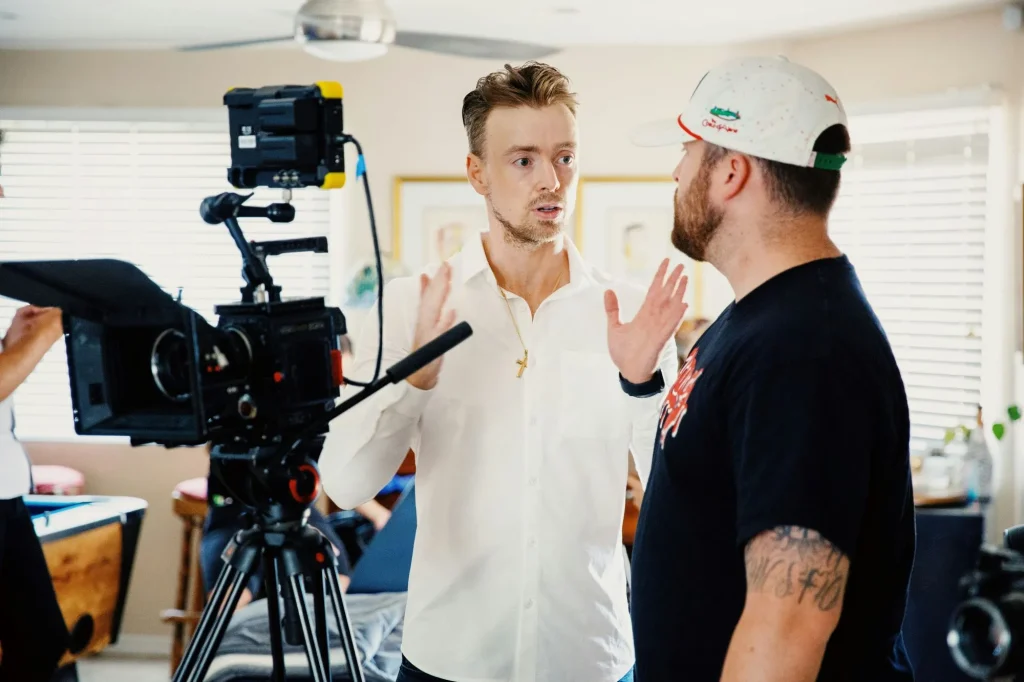Audio post-production can be complex and requires both time and expertise. But before you start the process, there are a couple of things you will need to know.
Here, we will cover all you need to know about the tools and equipment to become a post-production pro. We also have a handy post-production equipment list you can follow while building your studio.
Do You Need Equipment?
If you plan on starting audio post-production, you will need appropriate tools and equipment. It is impossible to complete the process without them, and there are so many options to choose from.
So, the short answer is yes. You will need equipment, but the precise items will depend on your project. The next question is “What type of tools will you need, and how do you pick the right ones?”
To understand this, we should look at all the possible options and see how useful these tools can be in audio post-production.
Audio Post-Production Equipment
Based on the nature of your project, you will need some of the equipment from the list. Keep in mind that not all of them will be used, as you will see in a moment.
1. PC and DAW
The first thing on the list is a PC. Today, having a PC is necessary for audio and video post-production, and it is one of the simplest ways to access the variety of tools and features you can use during the process.
Generally speaking, a PC will be necessary regardless of the type of project you’re working on. That leads us to the second part, which is DAW or Digital Audio Workstation. DAW is a software or a device that enables you to edit audio and video.
Naturally, there are many different types you can choose. Any DAW that will allow you to work with audio will be enough.
In the majority of cases, workstations will have the following:
- A PC
- A sound card
- Editing software
- An input device
However, in some cases, DAW can refer to software only, and it can be enough for audio post-production. If you are working solely with already recorded files, you will just need to edit them.
Here are a few versatile DAWs that you can start with:
2. Microphones
Audio post-production can include different processes, and you may need to re-record dialogues or parts of the audio. You will need professional equipment in your studio to do that.
The main tools for audio recording are microphones. These can be used for ADR or Automated Dialogue Replacement if parts of the audio are unusable. You will use microphones if you need to add voice-overs, dubbing, and anything else, including recording actors in a studio.
For sound effects, you can use existing sounds, or you can record them yourself. Both sound effects and foley will require a microphone. In all of these scenarios, your focus should be on the quality, which is why getting a high-quality mic is essential.
Investing in high-quality equipment will improve your product’s results, and you won’t need to fix as much in post-production.
If you need a quality microphone for your first studio, these two will serve you well:
3. Monitoring
The next thing on the list are speakers and monitoring equipment. To know whether you are doing the right job during audio post-production, you will need to hear everything that is happening on the recording.
You must be able to hear all the nuances and spot any mistakes so you can fix them later. And you’ll need to spend some extra on quality equipment to do that. Whether you are getting studio monitors, high-end speakers, or headphones you will need to add them to your checklist.
If you have a high-end speaker system (like 5.1 surround system) it can be a great option for audio production. Otherwise, you will need to choose between headphones and studio monitors. In the ideal world, you would use both.
Mixing with headphones means that each ear will hear its own speaker. When using only monitors, you’ll only be able to hear them. That will create an entirely different experience. Using both of these devices will allow you to hear the end product in two unique environments.
But remember that monitors are designed to provide the best possible sound, which is why so many engineers prefer them over headphones.
If you are looking for great studio monitors, these are among the best ones:
4. Plugins
Plugins are elements of software that add a new function to the existing program. For example, you can find plugins for your Digital Audio Workstation regardless of the audio post-production software you are already using. These plugins can add new effects and features, and they are worth checking out.
Now, plugins are essential for music since they will add simulations of existing gear. But for film and audio post-production, they might not be as important. Your stock version of DAW should come with EQ and compressors, and they can do a great job.
Other things you might want to check out are de-noises, audio repair tools, de-clippers, spectral editing, and others.
Here are a few plugins you may find in handy regardless of your level of expertise:
5. Tools for Foley
Adding subtle effects to audio is not easy. That is where Foley comes in. It is the process of recording audio sound effects for movies and TV shows. The sounds that come from Foley recordings can be anything from footsteps to sounds of clothes — anything that is too subtle for a regular microphone.
If you are doing Foley for a show or a movie, you will need a Foley stage, microphones, and a mixer to create realistic ambient sounds. You will also need plenty of props to record all the sounds needed for the project.
Fortunately, not all types of post-production require Foley, so you might be able to skip this step.
6. Additional Hardware
People who run a studio and focus on post-production must have the appropriate hardware. Of course, we already mentioned PCs and workstations, but you can also find editing keyboards, edit controllers, capture devices, sound cards, and many more.
It is up to you to choose whether you want to go analog or with one of the DAWs (with plugins) with the same capabilities. Some people prefer analog audio equipment, and you can still find fantastic mixing and processing stations.
One of the main issues for so many people is their budget since high-end analog equipment can be quite pricey. Most of the time, going for a PC/DAW combo is significantly cheaper while offering similar results.
Among the most popular hardware are audio mixers and production studios that allow you to adjust the sound easily. It is a perfect choice for streamers, podcasts, and content creators.
Among the best mixers are:
Does Audio Post-Production Equipment Depend on the Nature of the Project?
Yes, your post-production equipment list will depend on your project, as there is no universal solution. For example, you might be doing a voice-over for a video, which means you won’t need special effects and Foley.
You will need microphones and professional actors to record the audio, though. In most cases, movies will be the most complex projects since they will require ADR, Foley, sound effects, and so much more.
In almost every single scenario you will need:
- PC with DAW
- Monitoring system
- Microphones
The rest will depend on the project. One thing you can do is follow the checklist here, and see which of these elements you will need. That will help you create your own list you can follow.
Will High-End Equipment Improve the Quality of Your Audio?
The primary goal of audio post-production is to improve the quality of the original recording and replace any problematic parts that can’t be fixed. To make the process of post-production simpler, you should always focus on the quality during the recording.
The better your original recording, the less you’ll need to intervene in the post-production process. If the sound is good enough, you may not even need half of the equipment from this list.
Force Media Can Solve All of Your Post-Production Problems
Instead of worrying about potential issues or looking for post-production studio equipment, you can go for a simpler approach – contact us at Force Media! Our team has years of experience working in audio and video post-production, and we can make your dream project come true.
We can help you with the entire post-production process, including:
- Voice-overs
- Dubbing
- Video post-production
- Audio post-production
- Music creation
- Sound design
- And much more
If you want to take your audio game to the next level, contact us and tell us more about your next project!


